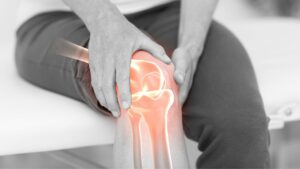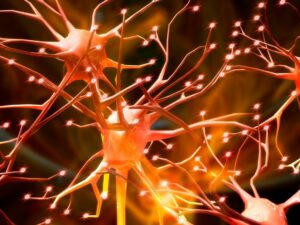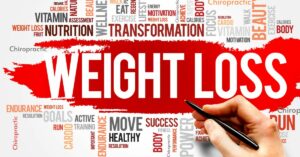
Why do so many people get off our chiropractic tables feeling invigorated?
Is it because of the pop? Or is something greater happening within? Across the United States, many individuals can attest to experiencing a reduction of seemingly unrelated health issues after receiving a chiropractic adjustment. At the very least, those who partake in routine spinal adjustments describe an overall increased sense of well-being; especially when sticking to a maintenance program and being adjusted regularly.
But why? Well, it turns out that every time you receive a chiropractic adjustment – two special hormones are increased in the body. These hormones are called Neurotensin and Oxytocin.
To understand what occurs after spinal manipulation or chiropractic adjustments, scientists at the University of Spain took 30 graduate students with no symptoms and assigned them to receive cervical adjustments, thoracic adjustments, or no manipulation at all. Blood samples were taken before the manipulation, immediately after it, and two hours later. The scientists sought to understand how hormones change in response to chiropractic adjustments.
What Did They Discover?
Scientists tracked four chemicals in the blood plasma: neurotensin, oxytocin, cortisol, and orexin. They found increases in neurotensin, oxytocin and cortisol when students received neck or cervical chiropractic adjustments. They also identified increased levels of neurotensin and orexin following thoracic or mid back chiropractic adjustments! Pretty cool huh?

Neurotensin plays a role in neutralizing pain and stress. In fact, many antipsychotic drugs are designed to increase neurotensin levels.
Decreased levels of neurotensin has also been linked to:
• Schizophrenia
• Gastrointestinal function
• Cardiac function
• Parkinson’s disease
• Elevated blood pressure
• Eating disorders
• Alzheimer’s
• Stroke
• Inflammation
Cancer of the:
• Colon
• Lungs
• Ovaries
• Pancreas
• Prostate
• Bones
• Brain
Oxytocin is the hormone that acts as a neurotransmitter in the brain. When levels are high, it helps you to bond with the people around you. Oxytocin levels are high when moms are giving birth, breastfeeding their babies, and when you kiss your loved ones. So when is the best time to get a hug from someone? Yup, right after an adjustment!
How Spinal Manipulation Changed Hormones
This study suggests that the descending inhibitory pathway mechanisms, or sensors of the spine may be mechanically stimulated during chiropractic adjustmetns. This tells you that the adjustment can cause definite increases in these neurotransmitters and hormones. The body interpreted the chiropractic manipulation as a mechanical force on the tissues that caused them to create the neuropeptides.
They also found that cervical manipulation (neck adjustments) increased levels of neuropeptides higher than thoracic manipulations (mid back).
Chiropractors Do More Than Crack Backs
The first Chiropractic adjustment, performed in 1895, helped restore a deaf janitor’s hearing in Davenport, Iowa. Twenty-three years later, Chiropractic was mostly notably utilized as a way to avoid acquiring or suffering fatal consequences from influenza during the flu pandemic of 1918. Millions of chiropractic patients receive nonmusculoskeletal benefits each week in chiropractic offices around the world from an adjustment. This particular study proved the clear connection between an adjustment and the hypothalamus, the part of the brain that directs neurotensin, oxytocin, and other hormones.
It is my goal to make sure that you understand why getting regular chiropractic care is so important. You are getting more than just a better range of motion or improving your alignment. When you get adjusted, you’re getting positive effects on the entire nervous system that are making widespread changes in your entire body. You’re literally getting a brain upgrade that helps your body run better overall.
Chiropractic works and now we know why it’s better than pain-killing drugs with side effects. If you know someone who is not getting regular chiropractic care, please share this message or have them contact our office.
Reference:
Plaza-Manzano, G., et al. Changes in biochemical markers of pain perception and stress response after spinal manipulation. Journal Orthopaedic and Sports Physical Therapy 2014;44(4):231-9. doi: 10.2519/jospt.2014.4996.
.
.

.
.





